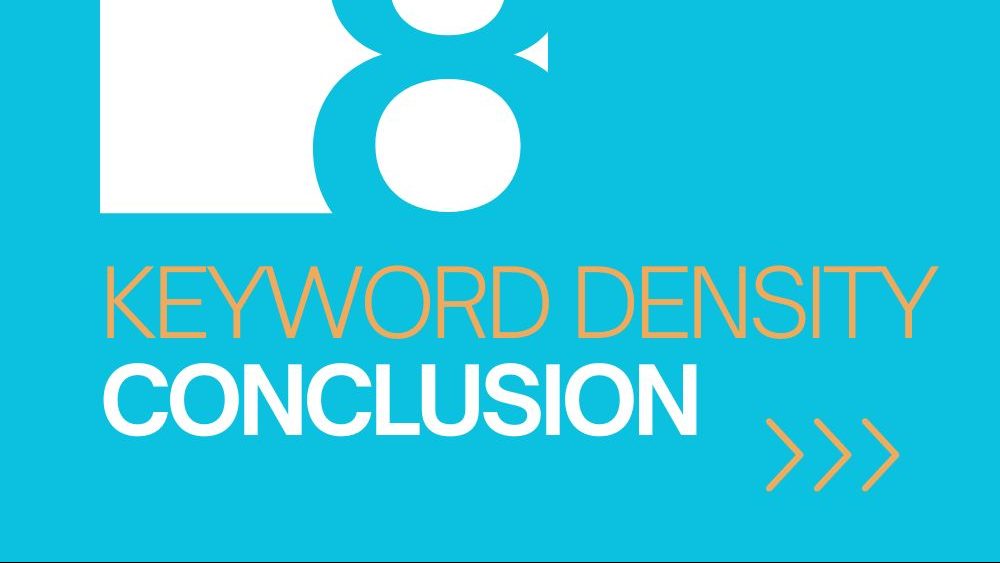In the ever-evolving realm of online content, mastering the art of SEO is paramount for digital success. At the heart of this optimization lies an often-discussed but not always fully understood concept: keyword density. As websites vie for attention in the crowded digital space, understanding and implementing effective keyword density strategies become key players in the game of search engine ranking.
We will embark on a journey through the intricacies of keyword density, unraveling its significance in the SEO landscape. We’ll explore what keyword density entails, why it holds such importance, and how it can be wielded as a powerful tool in the arsenal of digital marketers and content creators. So, buckle up as we delve into the world of keywords and the density that shapes their impact on online visibility.
What is Keyword Density?

At its core, keyword density is a metric that reflects the percentage of times a particular keyword or phrase appears within a piece of content in relation to the total word count. It serves as a gauge of how prominently a specific term is featured, signaling to search engines the content’s relevance to the topic it addresses.
While there is no one-size-fits-all formula for the perfect keyword density, industry experts generally recommend maintaining a balance. Aiming for a keyword density between 1% and 3% is often considered optimal. Striking this balance ensures that the content is adequately optimized for search engines without resorting to keyword stuffing, a practice that can lead to penalties and diminished user experience.
Common Misconceptions about Keyword Density
Misunderstandings about keyword density abound, and it’s crucial to dispel some common myths. One prevalent misconception is the notion that higher keyword density guarantees better rankings. In reality, search engines prioritize quality content over a mere repetition of keywords. We’ll explore this further as we navigate the intricacies of keyword optimization.
Now that we’ve established a foundational understanding of what keyword density is, let’s delve deeper into the role of keywords in the broader context of search engine optimization.
The Role of Keywords in SEO

Keywords are the linchpin of search engine optimization, acting as the connective tissue between what users search for and the content that is delivered to them. Understanding how search engines interpret and rank content based on these keywords is fundamental to achieving visibility in the competitive online landscape.
Importance of Keywords in SEO
Search engines, such as Google, rely on algorithms to crawl, index, and rank web pages. Keywords serve as the primary signals that help search engines understand the relevance of a page to a user’s query. When a user enters a search term, search engines scan through vast databases to identify pages containing that keyword. The more effectively a page incorporates relevant keywords, the higher the likelihood of it being prominently featured in search results.
How Search Engines Interpret and Rank Content?
Search engines employ sophisticated algorithms to analyze content and determine its suitability for specific queries. Factors such as keyword placement, relevance, and context play pivotal roles. It’s not just about having the right keywords; it’s about how seamlessly and contextually they are integrated into the content.
As we delve deeper into the significance of keywords, the next section will guide us through the process of finding the right keywords to optimize content effectively.
Finding the Right Keywords

In the vast expanse of the internet, identifying the keywords that resonate with your target audience is akin to discovering the secret code to online visibility. A strategic approach to keyword research involves not only understanding what users are searching for but also anticipating their needs and preferences.
Tools and Strategies for Keyword Research
- Keyword Research Tools: Utilize powerful tools like Google Keyword Planner, SEMrush, or Ahrefs to identify high-traffic keywords related to your content. These tools provide insights into search volume, competition, and variations of your chosen keywords.
- Long-Tail Keywords: While generic keywords are essential, don’t overlook the potency of long-tail keywords—more extended, specific phrases that often reflect user intent. Long-tail keywords may have lower search volumes, but they can be highly valuable in capturing a more targeted audience.
Optimizing On-Page Content
Armed with a list of carefully curated keywords, the next step is seamlessly integrating them into your on-page content. Let’s explore techniques to ensure a harmonious blend of optimization and readability.
- Strategic Placement: Position your primary keywords strategically in the title, meta description, and opening paragraphs. This signals to search engines the central theme of your content.
- Quality Content First: Prioritize creating high-quality, informative content that genuinely addresses user queries. Once you’ve crafted valuable content, weave in your keywords naturally. Avoid forced or unnatural placement.
Avoiding Keyword Stuffing and Maintaining Readability
While incorporating keywords is crucial, overloading your content with them can have detrimental effects. Keyword stuffing, or the excessive use of keywords in an attempt to manipulate rankings, not only turns off readers but also raises red flags for search engines. Strike a balance that ensures your content remains engaging and accessible.
Now, let’s explore the significance of header tags, particularly H1, H2, H3, and H4, in optimizing content for search engines.
Optimizing On-Page Content
Creating content that not only resonates with your audience but also aligns with search engine algorithms is a delicate balance. On-page optimization, involving the strategic placement of keywords and other elements, plays a pivotal role in enhancing visibility and user experience.
Techniques for Incorporating Keywords Naturally in Content
Begin by strategically placing your primary keywords in critical elements such as the title, meta description, and opening paragraphs. This immediate association signals to search engines the central theme of your content. The cornerstone of effective on-page optimization is the creation of high-quality, informative content. Craft content that genuinely addresses user queries and provides value. Once you’ve developed valuable content, seamlessly weave in your keywords to enhance optimization.
- Begin by strategically placing your primary keywords in critical elements such as the title, meta description, and opening paragraphs. This immediate association signals to search engines the central theme of your content.
- Quality Content First: The cornerstone of effective on-page optimization is the creation of high-quality, informative content. Craft content that genuinely addresses user queries and provides value. Once you’ve developed valuable content, seamlessly weave in your keywords to enhance optimization.
Avoiding Keyword Stuffing and Maintaining Readability
While the inclusion of keywords is crucial, a careful line must be walked to prevent keyword stuffing. Excessive use of keywords not only hampers the readability of your content but can also lead to penalties from search engines. Prioritize readability and engagement, ensuring that keywords are naturally integrated rather than forced.
In the next section, we’ll explore the specific importance of header tags, including H1, H2, H3, and H4, in the realm of SEO. These tags not only structure your content but also provide valuable signals to search engines about the hierarchy and relevance of information. Let’s dive into the nuances of utilizing header tags for optimal keyword optimization.
Importance of Header Tags
In the intricate dance of SEO, header tags emerge as unsung heroes, silently guiding search engines through the hierarchy of your content. Understanding the significance of H1, H2, H3, and H4 tags is instrumental in optimizing your content for both search engines and human readers.
Significance of H1, H2, H3, and H4 Tags in SEO
- H1 Tags – The Headline Powerhouse: The H1 tag is akin to the headline of a newspaper article. It communicates the primary topic or focus of your content. Including your main keyword in the H1 tag signals its importance to search engines.
- H2 Tags – Structuring Subtopics: Think of H2 tags as section headers in a book. They break down the main topic into subtopics, providing a structured format for your content. Incorporating relevant keywords in H2 tags reinforces the thematic relevance to search engines.
- H3 and H4 Tags – Fine-Tuning Details: H3 and H4 tags delve deeper into subtopics, offering a hierarchical structure within H2 sections. While these tags may not carry as much weight as H1 and H2, they still provide valuable context for search engines and contribute to the overall organization of your content.
Best Practices for Using Header Tags
- Single H1 Tag: Ensure your content has a single H1 tag, usually reserved for the main headline. This helps search engines clearly identify the primary focus of your content.
- Hierarchy and Consistency: Maintain a logical hierarchy with your header tags. Use H2 tags for main sections, followed by H3 and H4 tags for subsections. Consistency in this structure aids both readability and SEO.
As we continue our exploration, the next section will shed light on the use of synonyms and variations to diversify keyword usage, offering a nuanced approach to optimizing content for both search engines and human readers.
Utilizing Synonyms and Variations
In the dynamic landscape of SEO, the art of language plays a pivotal role. Search engines have evolved to understand not only specific keywords but also the contextual nuances surrounding them. Embracing synonyms and variations in your content not only enhances optimization but also caters to the diverse ways users express their queries.
Diversifying Keyword Usage with Synonyms
- Contextual Relevance: Incorporating synonyms ensures that your content remains contextually relevant. Search engines are adept at recognizing the semantic meaning behind words, allowing for a more nuanced understanding of your content.
- Natural Language Processing (NLP): With the rise of natural language processing, search engines aim to understand user queries in a more conversational tone. Using synonyms aligns your content with this trend, making it more accessible to voice searches and natural language queries.
How Search Engines Understand and Appreciate Keyword Variations?
- Latent Semantic Indexing (LSI): Search engines employ LSI to analyze the relationships between words and phrases. By incorporating synonyms and variations, you provide additional context for search engines to interpret the thematic relevance of your content.
- Enhanced User Experience: Diversifying your keyword usage not only benefits search engine algorithms but also enhances the user experience. Readers are more likely to engage with content that feels natural and avoids repetitive language.
Now that we’ve explored the importance of synonyms and variations in keyword optimization, let’s delve into the critical aspect of balancing density across your content to avoid over-optimization and its potential consequences.
Balancing Density Across Content

Navigating the delicate balance of keyword density is akin to walking a tightrope in the ever-changing landscape of SEO. Striking the right equilibrium involves distributing keywords evenly throughout your content while steering clear of the pitfalls of over-optimization.
Distributing Keywords Evenly Throughout the Content
- Natural Integration: Instead of concentrating keywords in specific sections, aim for a natural and even distribution throughout your content. This approach ensures that your keywords are seamlessly integrated into the narrative, maintaining a fluid and reader-friendly experience.
- Focus on Key Sections: While even distribution is essential, consider strategically emphasizing keywords in critical sections like the introduction, headings, and conclusion. This reinforces the thematic relevance of your content to both readers and search engines.
Avoiding Over-Optimization and Its Consequences
- Penalties from Search Engines: Search engines, particularly Google, penalize websites that engage in over-optimization practices, such as keyword stuffing. This can result in a drop in rankings and reduced visibility.
- Reader Engagement: Overloading your content with keywords can lead to a jarring and unnatural reading experience. Prioritize user engagement by maintaining a balance that caters to both search engines and human readers.
As we move forward, let’s explore the tools and strategies available for monitoring and adjusting keyword density. Keeping a vigilant eye on how your content performs allows for continuous refinement and improvement in your SEO efforts.
Monitoring and Adjusting Keyword Density

Monitoring and adjusting keyword density is not a one-time task but an ongoing process that requires vigilance and responsiveness to the dynamic nature of search engine algorithms.
Tools for Tracking Keyword Density
- Google Analytics: Leverage the power of Google Analytics to gain insights into the performance of your content. Track the organic search traffic, user behavior, and keyword performance to understand how your content resonates with your audience.
- SEO Tools: Utilize dedicated SEO tools like SEMrush, Ahrefs, or Moz to monitor keyword performance. These tools provide detailed analytics, including keyword rankings, organic traffic, and even suggestions for improvement.
Strategies for Adjusting Density Based on Analytics
- Regular Audits: Conduct regular content audits to assess keyword density and overall SEO performance. Identify underperforming content and explore opportunities to enhance keyword optimization.
- User Engagement Metrics: Pay attention to user engagement metrics, such as bounce rate and time spent on page. High bounce rates may indicate mismatched user intent or issues with content quality, prompting a reassessment of keyword usage.
By staying attuned to analytics and user behavior, you can adapt your content strategy to align with evolving search engine algorithms and user expectations.
As we delve further into the symbiotic relationship between user experience and SEO, the next section will explore how engaging content contributes to SEO success and overall digital prominence. Let’s uncover the intricacies of this interconnected dynamic.
User Experience and SEO

In the intricate dance of digital content, user experience (UX) takes center stage. Beyond the technicalities of keyword optimization, creating content that engages and satisfies users is a fundamental pillar of successful SEO.
Correlation Between User Experience and Keyword Optimization
- Content Relevance: Engaging content goes hand in hand with keyword optimization. Users should find your content informative and directly relevant to their queries. A seamless integration of keywords contributes to the overall coherence of your content.
- Page Load Speed: User experience extends beyond the content itself. Page load speed is a critical factor influencing how users perceive your website. Slow-loading pages can lead to high bounce rates, negatively impacting your SEO efforts.
How Engaging Content Contributes to SEO Success
- Reduced Bounce Rates: High-quality, engaging content keeps users on your page longer, reducing bounce rates. This signals to search engines that your content is valuable and aligns with user intent.
- Increased Dwell Time: Dwell time, the duration users spend on your page, is a key metric search engines consider. Compelling content captures attention, increasing dwell time and sending positive signals to search algorithms.
In the next section, we’ll delve into real-world examples through case studies, showcasing websites that have successfully navigated the realms of keyword optimization and user engagement to achieve SEO success. Let’s draw inspiration from their strategies and outcomes.
Case Studies: Successful Keyword Optimization

In the dynamic world of SEO, success stories abound for those who master the delicate balance of keyword optimization. Let’s explore real-world examples of websites that have strategically leveraged keywords to enhance their online visibility and achieve tangible results.
Case Study 1: E-Commerce Triumph
- Challenge: A leading e-commerce platform aimed to boost visibility for its product pages.
- Strategy: Thorough keyword research identified high-conversion long-tail keywords. Product descriptions were optimized with these keywords, ensuring a natural and informative flow.
- Outcome: Over a six-month period, organic traffic to product pages increased by 30%, resulting in a substantial rise in sales.
Case Study 2: Blog Niche Domination
- Challenge: A niche blog sought to establish authority in a competitive industry.
- Strategy: In-depth keyword analysis revealed untapped long-tail keywords related to specific industry trends. Blog posts were crafted to incorporate these keywords naturally.
- Outcome: The blog experienced a 50% increase in organic traffic within three months, solidifying its position as a go-to resource in the niche.
Case Study 3: Local Business Visibility
- Challenge: A local service business aimed to enhance its online presence within the community.
- Strategy: Localized keyword targeting was employed, emphasizing location-specific terms. Google My Business optimization complemented on-page content.
- Outcome: The business witnessed a 40% increase in local search impressions, resulting in a surge in customer inquiries and walk-ins.
These case studies underscore the diverse strategies that can be employed to achieve success in keyword optimization. Whether in e-commerce, blogging, or local services, understanding the nuances of your target audience and crafting content accordingly can yield remarkable results.
As we gaze into the future of SEO, the next section will explore emerging trends and predictions in keyword optimization. Stay ahead of the curve by anticipating the shifts that will shape the landscape of digital visibility.
Future Trends in Keyword Optimization

In the fast-paced world of SEO, staying ahead of the curve requires anticipating future trends. As search engine algorithms evolve and user behaviors shift, here are some emerging trends in keyword optimization that are poised to shape the future of digital visibility.
- [Semantic Search Evolution]
- Trend: Search engines are increasingly adopting advanced semantic search capabilities. They aim to understand the context and intent behind user queries, focusing on the meaning rather than exact keyword matches.
- Strategy: Embrace a more holistic approach to content creation. Focus on providing comprehensive and contextually rich information to align with semantic search algorithms.
- [Voice Search Optimization]
- Trend: With the rise of voice-activated devices, voice search is becoming mainstream. Users are adopting more conversational queries.
- Strategy: Tailor your content to accommodate natural language queries. Optimize for question-based keywords and long-tail phrases that align with how people speak.
- [Mobile-First Indexing]
- Trend: Mobile-first indexing has become a priority for search engines. Websites that offer a seamless mobile experience are given precedence in rankings.
- Strategy: Ensure your website is mobile-friendly. Prioritize responsive design and optimize content for mobile users to secure higher visibility in search results.
- [Video Content Optimization]
- Trend: Video content is gaining prominence in search results. Search engines are increasingly valuing video as a form of content.
- Strategy: Incorporate video content into your strategy. Transcribe videos to make their content accessible to search engines.
By staying attuned to these evolving trends, you can position your content for success in the ever-changing landscape of digital marketing. As we wrap up our exploration of future trends, let’s reflect on the key takeaways and the exciting possibilities that lie ahead for keyword optimization.
Conclusion

In the dynamic realm of SEO, mastering the art of keyword optimization is akin to navigating the ever-changing currents of digital visibility. From understanding the nuances of keyword density to embracing emerging trends, this journey has uncovered the intricate strategies that underpin successful online content.
As we bid adieu to this exploration, remember that the symbiotic relationship between engaging content and strategic keyword usage is at the core of SEO triumphs. Strive for a delicate balance that not only captivates your audience but also aligns seamlessly with the algorithms that dictate online prominence.
In the ever-evolving landscape of digital marketing, staying adaptable and future-focused is the key to sustained success. Embrace emerging trends, monitor user behavior, and refine your strategies to stay ahead in the competitive world of SEO.
FAQs: Unlocking the Secrets of Keyword Optimization
Q1: How often should I use my target keywords in my content?
A1: While there is no one-size-fits-all answer, aiming for a keyword density between 1% and 3% is generally considered optimal. However, prioritize natural and seamless integration over a rigid adherence to a specific percentage.
Q2: Are long-tail keywords essential for SEO?
A2: Absolutely. Long-tail keywords, being more specific, often cater to user intent more accurately. They can be valuable in capturing a targeted audience, especially in niche markets.
Q3: Can I use synonyms interchangeably with my target keywords?
A3: Yes, using synonyms is a recommended strategy. It not only diversifies your content but also aligns with how search engines understand and interpret language through natural language processing.
Q4: How can I monitor my keyword performance?
A4: Utilize tools such as Google Analytics, SEMrush, or Ahrefs to track keyword rankings, organic traffic, and user behavior. Regular content audits can also provide insights into keyword performance.
Q5: What’s the future of keyword optimization in SEO?
A5: The future holds trends like semantic search evolution, voice search optimization, mobile-first indexing, and video content optimization. Adapting to these trends and focusing on user-centric, high-quality content will be key for success.
Embark on your SEO journey with confidence, armed with the knowledge to optimize your content effectively and thrive in the ever-evolving digital landscape.
